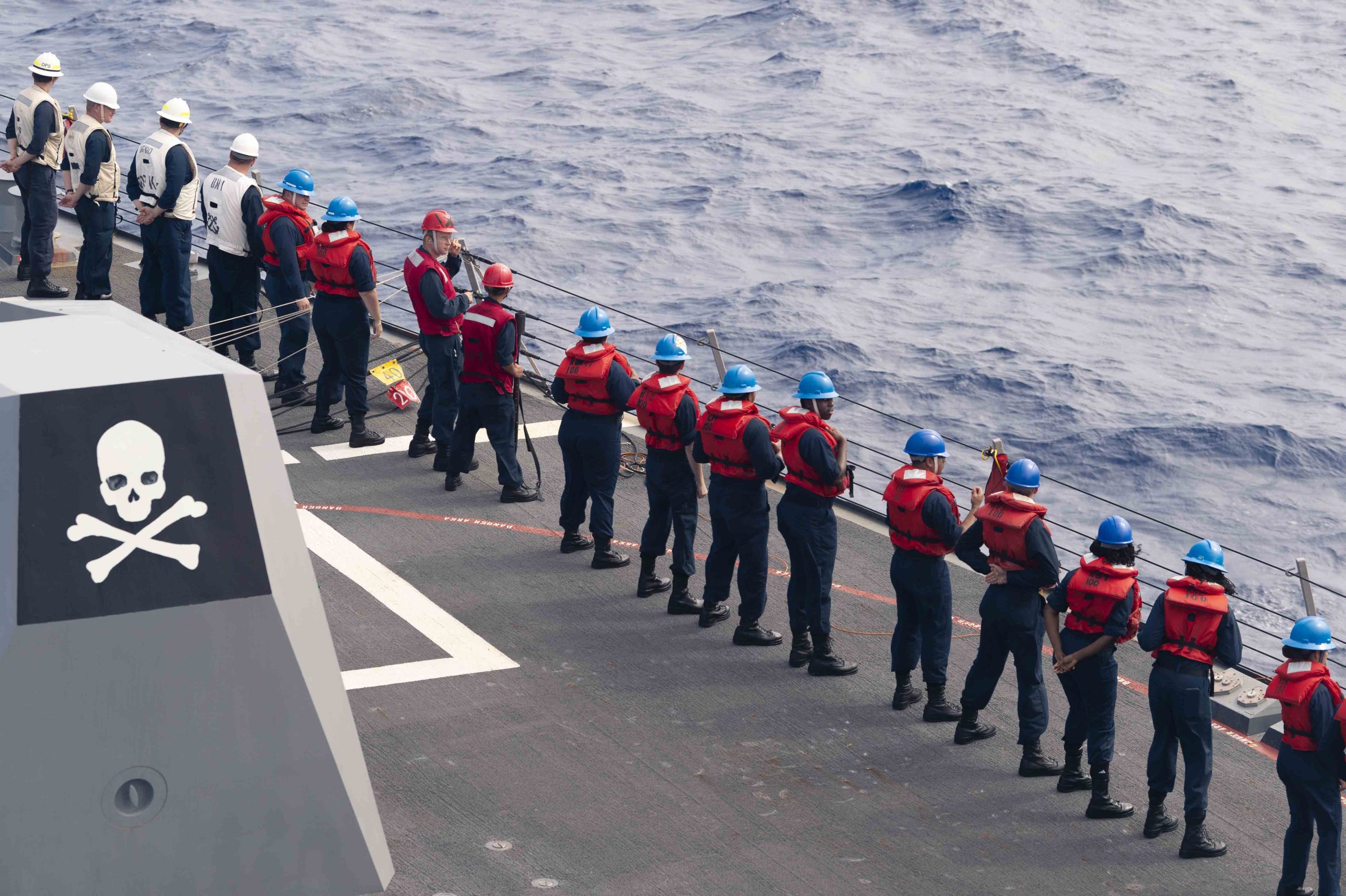
Nearly two in five enlisted sailors say they feel severely or extremely stressed, according to newly released data from the Navy’s Health of the Force survey.
Approximately 41 percent of enlisted sailors with ranks between E-1 to E-6 reported feeling severely or extremely stressed, with 36 percent of enlisted sailors E-7 to E-9 saying the same, according to the survey results released Thursday. Rates for both groups have risen since 2019, the oldest data available in the report.
The Navy invited all active duty sailors to take the Health of the Force survey via an email link, according to the report. The sea service received responses from 19,380 sailors who filled out at least a third of the survey. The survey covered a variety of areas, including likelihood of staying in the service, morale, alcohol and drug use and domestic abuse.
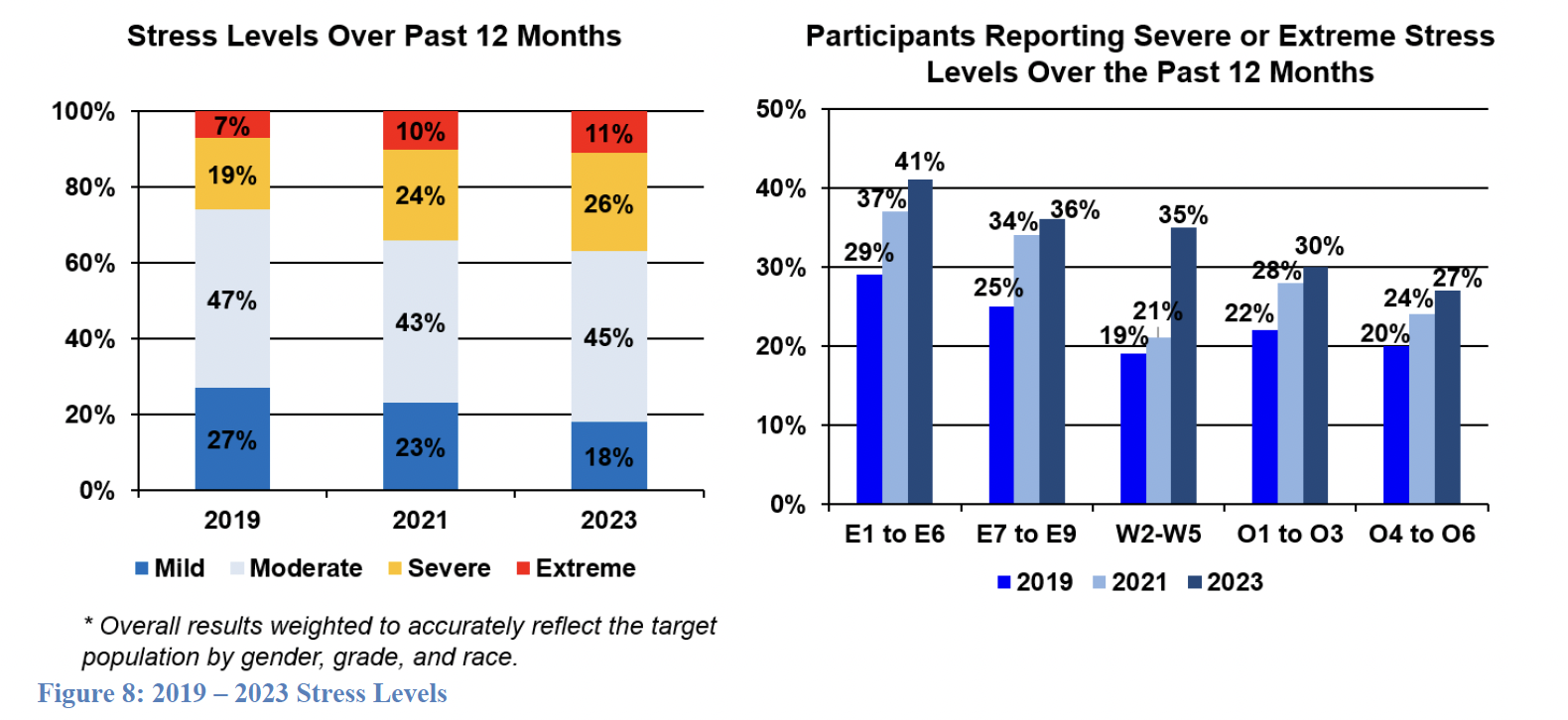
For the sailors with ranks E-6 and below, rates increased from 29 percent in 2019 and 37 percent in 2021. Rates for 2020 and 2022 were not included. For sailors E-7 and above, rates increased from 25 percent in 2019 and 34 percent in 2021.
The rates are going up as gaps at-sea increase, as well. According to the latest numbers, there are now 22,000 gaps at-sea for enlisted sailors between E-1 to E-4, while overall the gaps at-sea were about 21,000, USNI News previously reported. The reason the overall number is lower is due to an overabundance of sailors E-5 and above in some billets.
The total fill gaps as of October 2023 is 21,481, an increase of more than 7,000 from October 2022 when the total fill gaps was 14,355. The report did not indicate what might have resulted in the jump.
The Navy did miss its enlisted recruiting goal by 7,000, USNI News previously reported.
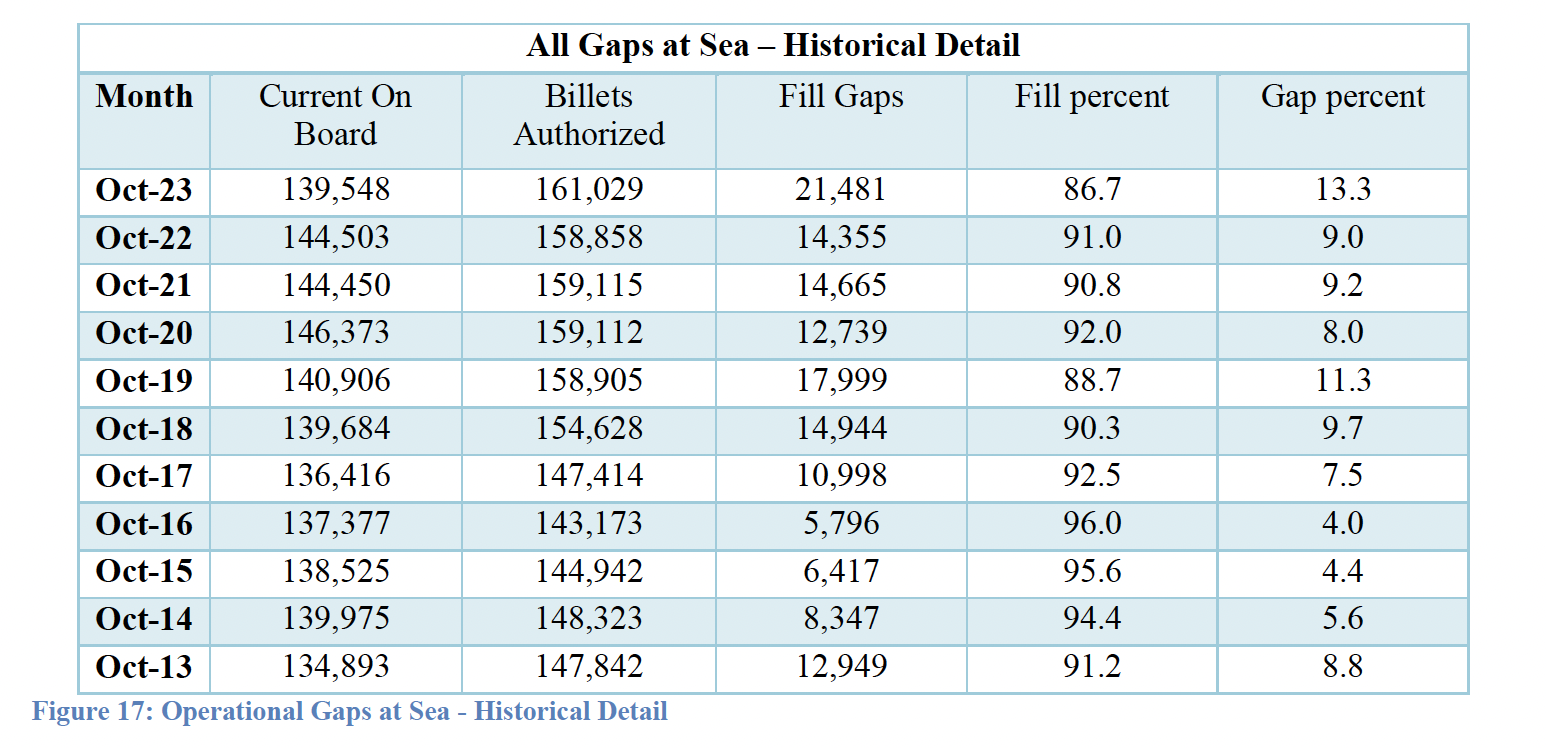
Although officers reported less stress than enlisted sailors, they too also saw an increase from 2019.
In 2019, 22 percent of officers O-1 to O-3 reported feeling severe or extreme stress. That number rose to 28 percent in 2021 and 30 percent in 2023.
In 2019, 20 percent of officers O-4 to O-6 reported severe or extreme stress, a percentage that rose to 24 percent in 2021 and 27 percent in 2023.
Overall, 26 percent of sailors – enlisted and officers – reported feeling severe stress and 11 percent reported extreme stress, rates that were higher than 2021 or 2019.
Like stress, burnout also affected the enlisted sailors with ratings E-6 and below at higher rates, according to the survey results, although the data was not broken out like it was with stress levels.
Overall, 27 percent of sailors reported high levels of burnout, compared to 28 percent in 2021 and 20 percent in 2019.
“High levels of burnout are associated with an increased risk of mental and physical health problems as well as poor job performance,” according to the report.
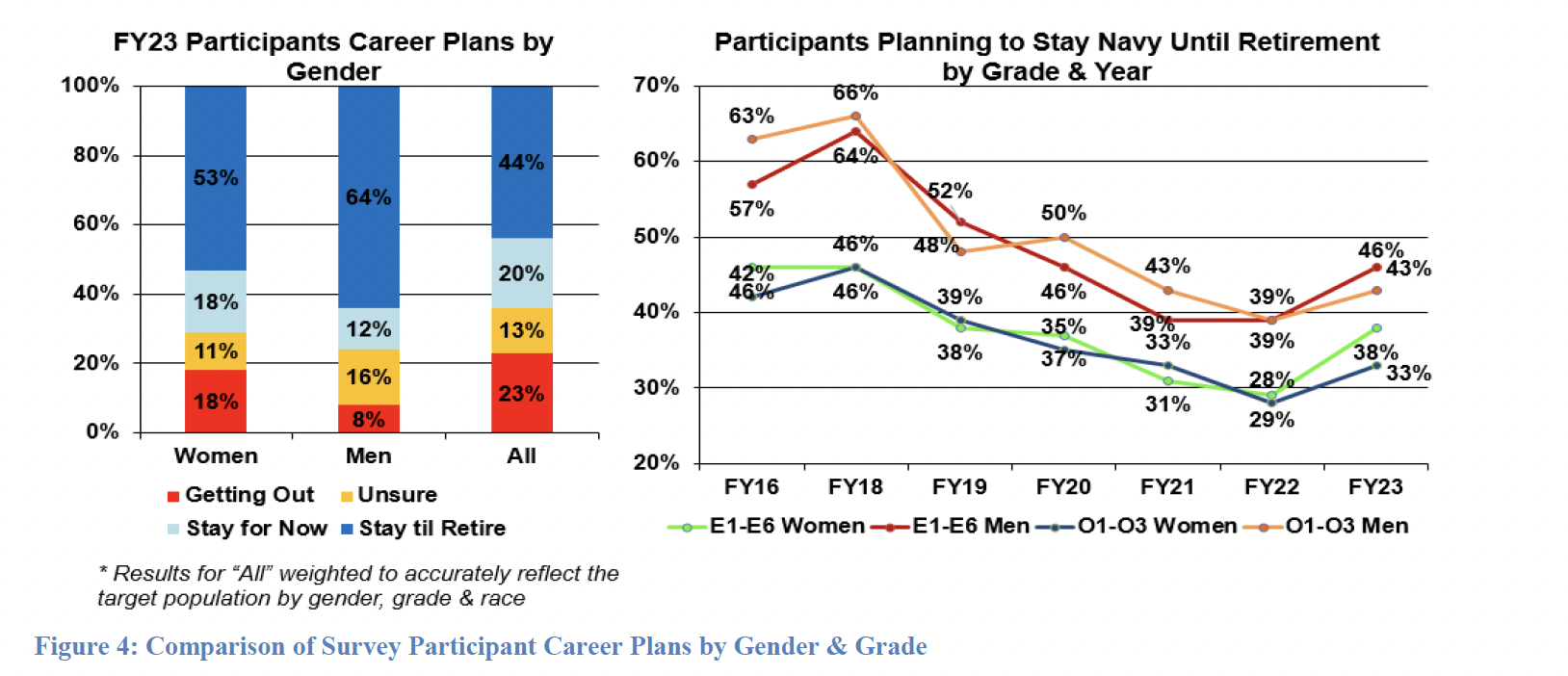
Both enlisted men and women had higher rates of saying they would stay in the Navy until retirement compared to their officer counterparts. However, men said they would stay in until retirement at a higher rate then women.
When it came to morale, officers reported higher command morale compared to enlisted sailors, with the more senior officers reporting higher command morale at a higher rate. The youngest enlisted sailors, those E-1 through E-6 were least likely to say they had high morale in their commands.
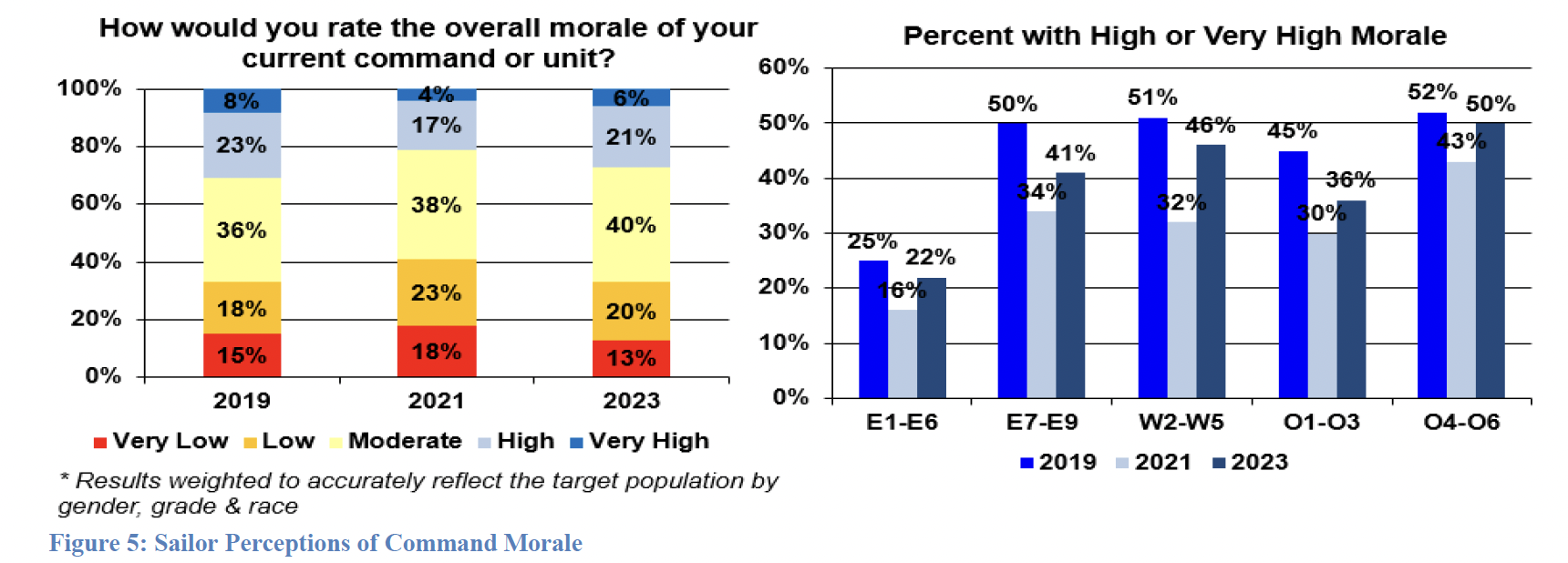
Only 22 percent of those sailors thought that their commands had high morale, compared to 41 percent of sailors E-7 and above.
Rates in 2023 were similar to those in 2019, returning from a dip in 2021. The report did not indicate what caused the 2021 dip.





